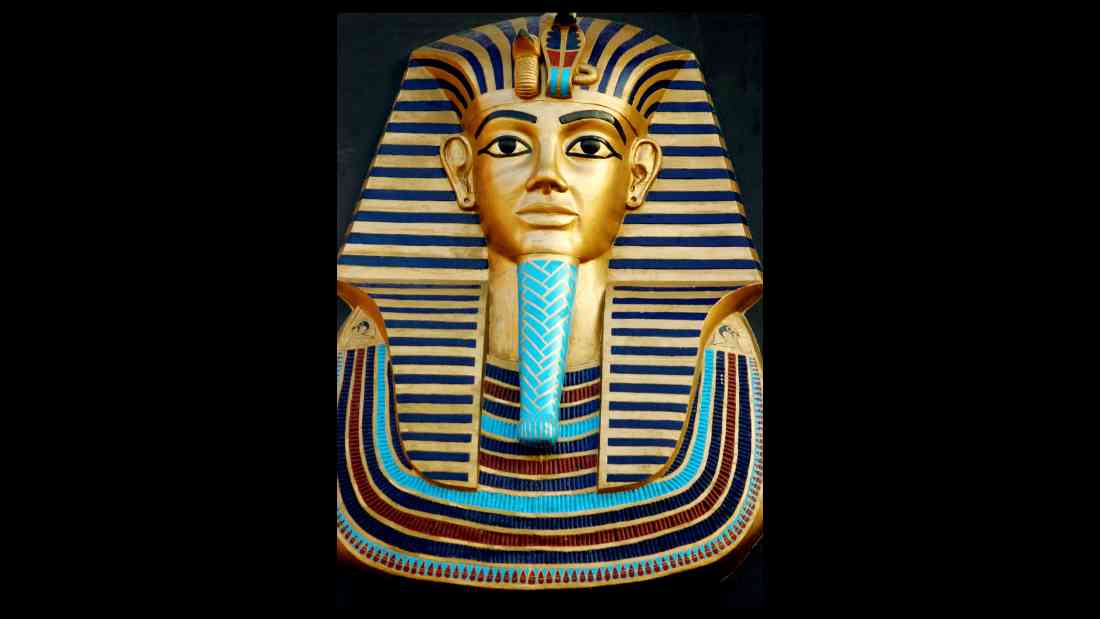Egypt, with its rich history and captivating culture, is often associated with the mighty pharaohs who ruled over the land. Among these leaders, some names stand out as truly legendary figures that have left an indelible mark on history. In this blog post, we will delve into the lives of the most famous Egyptian pharaohs, chronologically from Khufu to Cleopatra, and explore their enduring legacies.
The Most Famous Egyptian Pharaohs – Djoser (2686 BC – 2649 BC)
Djoser, also known as Netjerikhet, ruled during the Third Dynasty of the Old Kingdom, from 2686 BC to 2649 BC.
He is best remembered for his ground-breaking architectural achievements, most notably the construction of the Step Pyramid at Saqqara, which revolutionized the concept of royal tombs in ancient Egypt.
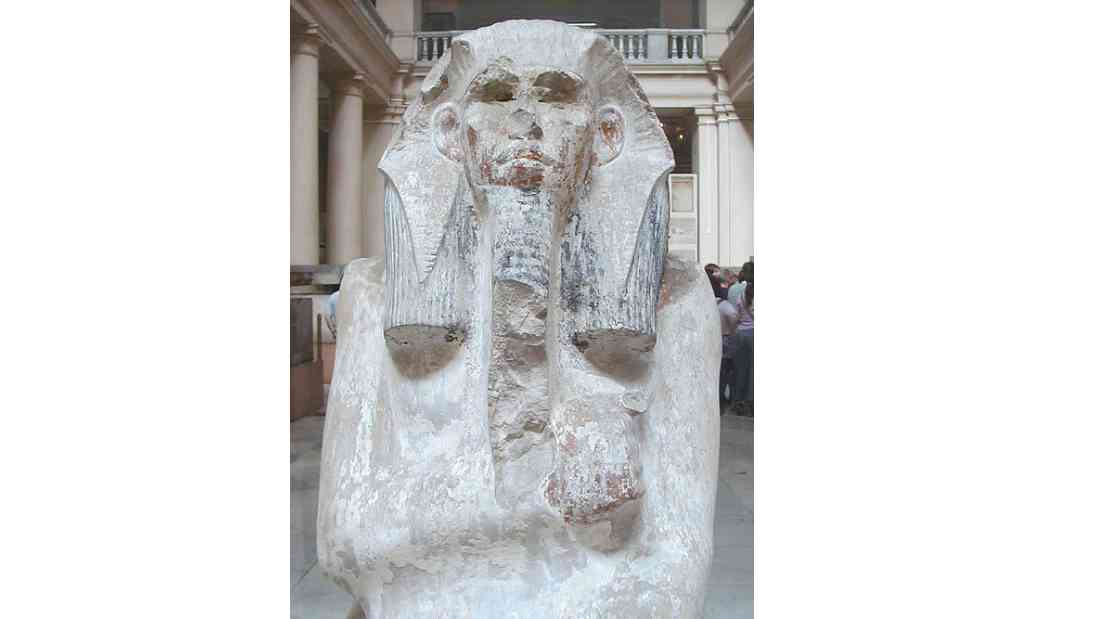
Reign and Period of Stability
Djoser’s reign marked a period of stability and prosperity in ancient Egypt.
As the third pharaoh of the Third Dynasty, he inherited a kingdom that had experienced political and social upheavals.
Djoser implemented effective administrative reforms, centralized power, and maintained strong control over the kingdom, fostering a sense of unity and stability during his rule.
The Step Pyramid Complex
Djoser’s most significant architectural accomplishment was the construction of the Step Pyramid complex at Saqqara.
Designed by his renowned architect, Imhotep, the Step Pyramid represented a monumental departure from traditional mastaba-style tombs.
It consisted of six stacked rectangular levels, gradually decreasing in size as they ascended, giving the structure its distinctive stepped appearance.
Imhotep’s innovative approach transformed ancient Egyptian architecture, combining elements from different building styles to create an awe-inspiring monument.
Imhotep’s contributions as an architect, physician, and statesman made him one of the most revered figures in ancient Egyptian history.
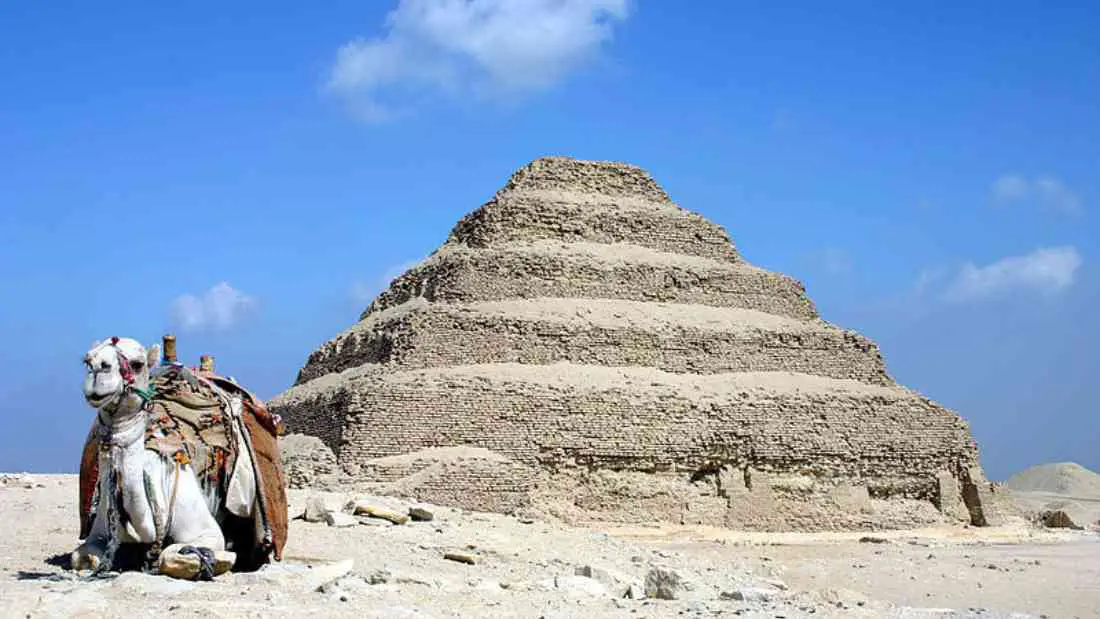
Engineering Feats and Symbolism
The construction of the Step Pyramid showcased the engineering prowess and ingenuity of Djoser’s architects and builders.
The pyramid’s unique design required careful planning and precise execution.
The use of limestone and the incorporation of internal chambers and galleries demonstrated a sophisticated understanding of architectural principles.
The Step Pyramid complex served not only as Djoser’s burial place but also as a center for religious and ceremonial activities.
The complex included temples, courtyards, and ceremonial structures, emphasizing the pharaoh’s divine status and his connection with the gods.
Legacy and Influence
Djoser’s innovative architectural achievements established a blueprint for future pyramid construction in Egypt.
The Step Pyramid served as a model for subsequent generations of pharaohs, who sought to emulate its grandeur and complexity in their own funerary monuments.
Djoser’s reign thus marked a turning point in Egyptian architecture, with the Step Pyramid serving as a precursor to the iconic pyramids of Giza.
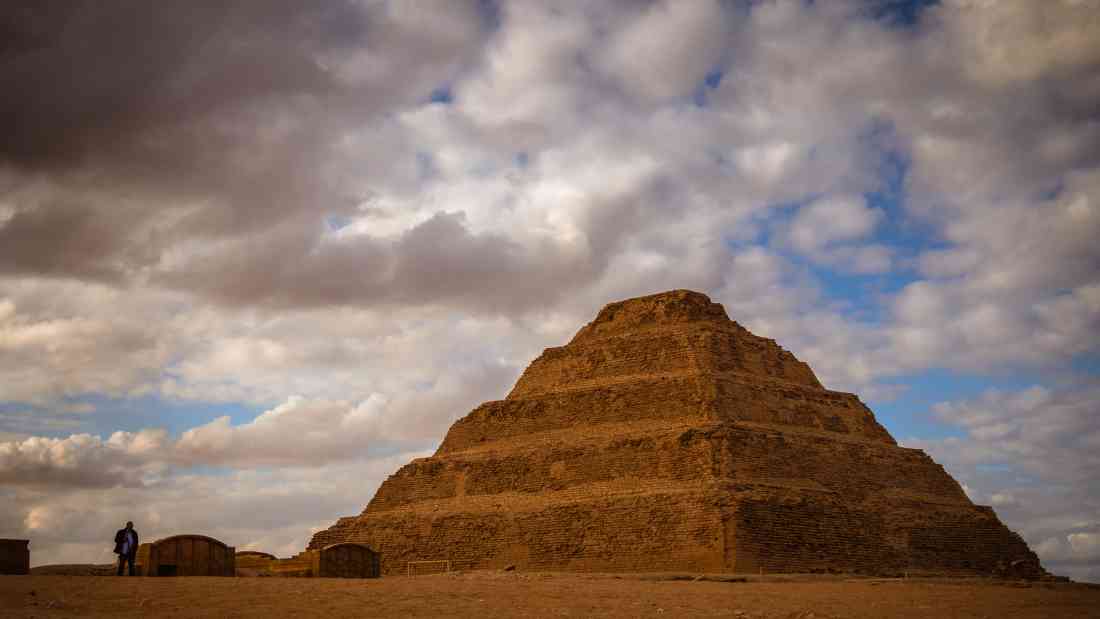
The Most Famous Egyptian Pharaohs – Khufu (2589 BC – 2566 BC)
Khufu, also known as Cheops, ruled during the Old Kingdom in the 26th century BC.
He is best known for commissioning the construction of the Great Pyramid of Giza, one of the Seven Wonders of the Ancient World and the largest pyramid ever built.
Reign and Succession
Khufu ascended to the throne around 2589 BC, following the reign of his father, Sneferu.
As the second pharaoh of the Fourth Dynasty, Khufu’s reign marked a period of stability and prosperity in ancient Egypt.
He ruled for approximately 23 years, during which he focused on expanding Egypt’s influence and solidifying his position as a powerful ruler.
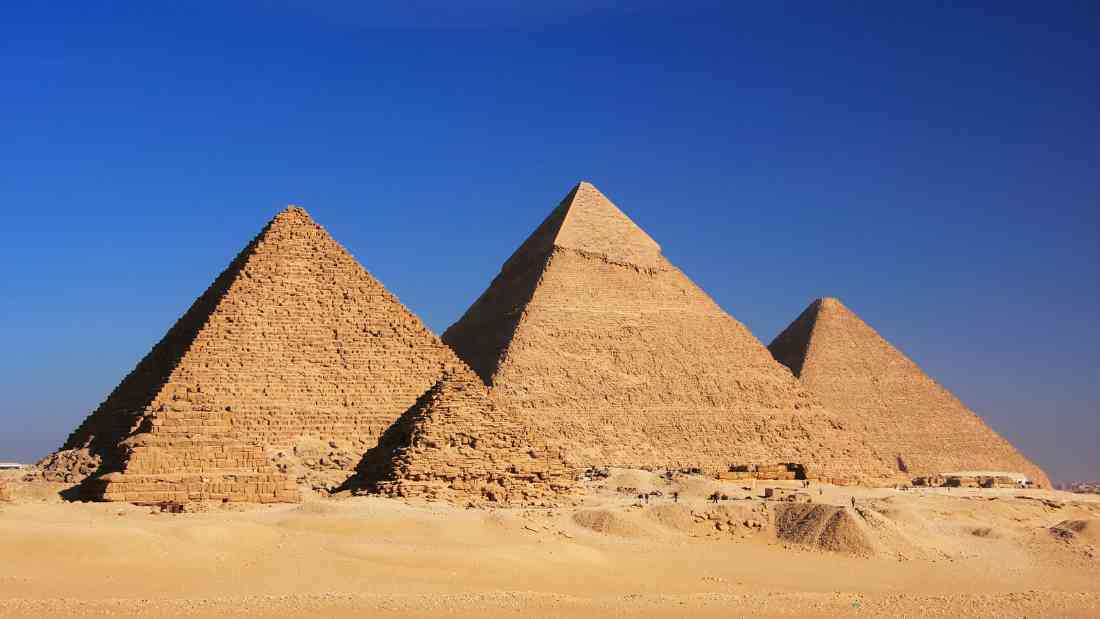
The Great Pyramid of Giza
Khufu’s most enduring legacy is undoubtedly the Great Pyramid of Giza.
Built as his tomb, this monumental structure took an estimated 20 years to complete and required an immense workforce of laborers, engineers, and skilled craftsmen.
The Great Pyramid stood at an impressive height of over 480 feet (146 meters) and was constructed using approximately 2.3 million limestone blocks.
Engineering Feats and Construction Techniques
The construction of the Great Pyramid demonstrates the advanced engineering skills and remarkable precision achieved by Khufu’s architects and builders.
The pyramid’s design incorporated sophisticated mathematical calculations, aligning it precisely with the cardinal points of the compass.
The precision-cut stone blocks were meticulously placed to create a seamless structure that has withstood the test of time.
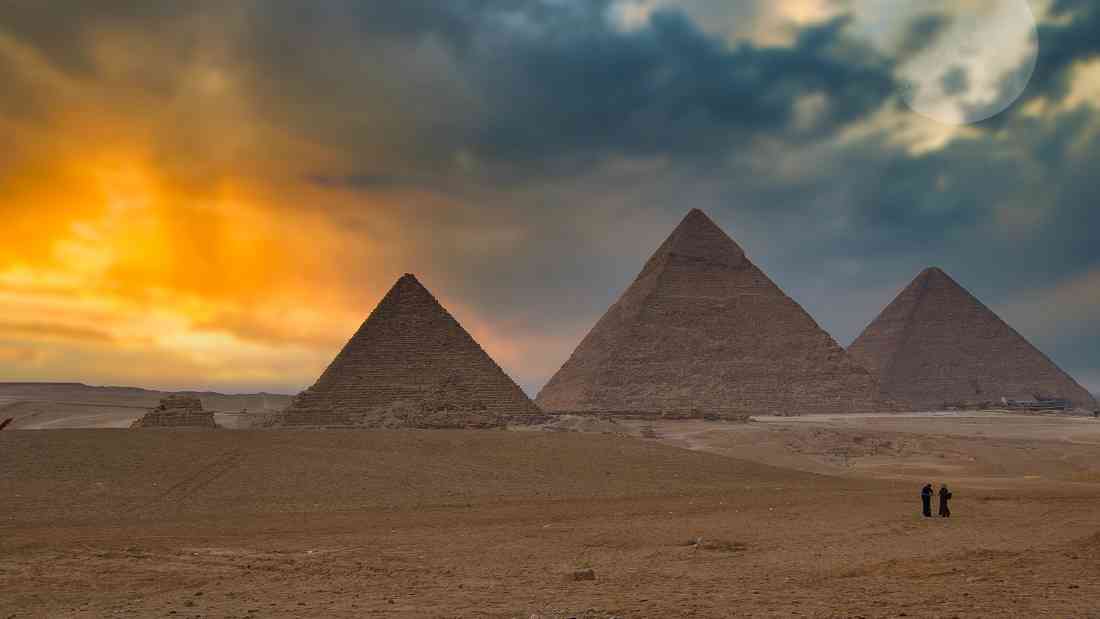
Legacy and Influence
Khufu’s reign and the construction of the Great Pyramid marked a cultural and architectural zenith in ancient Egypt.
The monument’s sheer scale and grandeur symbolized the pharaoh’s divine power and everlasting presence.
Khufu’s legacy continued to inspire subsequent generations of pharaohs, who sought to emulate his monumental achievements in their own pyramid complexes.
The Great Pyramid remains an awe-inspiring testament to the ingenuity and mastery of ancient Egyptian civilization. With its construction, Khufu forever etched his name in the annals of history.
The monumental structure stands as a testament to his power, wealth, and ambition to create a lasting memorial for himself.
Khufu’s reign saw the pinnacle of Egyptian engineering prowess and left an indelible mark on the architectural landscape of ancient Egypt.
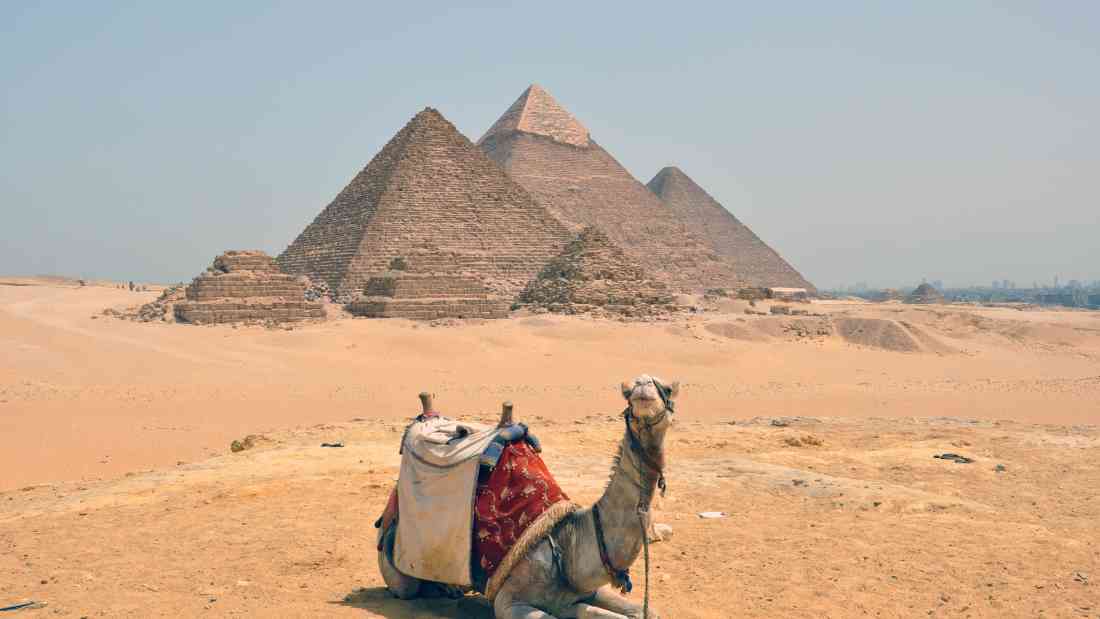
The Most Famous Egyptian Pharaohs – Hatshepsut (1507 – 1458 BC)
Hatshepsut, a remarkable figure in ancient Egyptian history, defied conventions by becoming one of the few female pharaohs to rule Egypt.
Her reign brought about a period of stability and prosperity, marked by trade expeditions and ambitious construction projects.
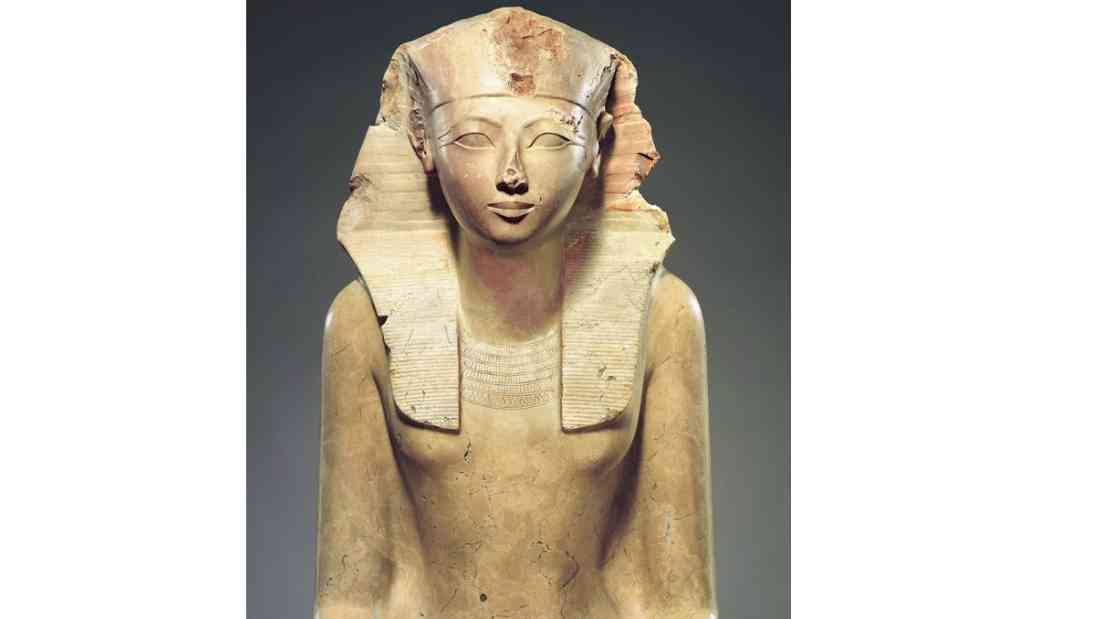
A Period of Stability and Prosperity
Hatshepsut’s ascension to the throne ushered in a period of stability and growth for ancient Egypt.
Her reign, from approximately 1473 to 1458 BCE, saw advancements in trade and diplomacy, contributing to the kingdom’s economic prosperity.
Hatshepsut’s policies focused on expanding Egyptian influence through trade expeditions, which allowed for the acquisition of valuable resources and enhanced cultural exchange with neighboring regions.
Ambitious Construction Projects
Hatshepsut was known as one of the most prolific builders in ancient Egypt.
Throughout her reign, she commissioned numerous construction projects that showcased her architectural vision and artistic achievements.
Among her most notable structures is the magnificent mortuary temple at Deir el-Bahari, located on the west bank of the Nile near modern-day Luxor.
This temple, dedicated to the worship of Amun-Ra and Hatshepsut herself, features impressive terraces, colonnades, and intricate reliefs, demonstrating her commitment to grandeur and beauty.
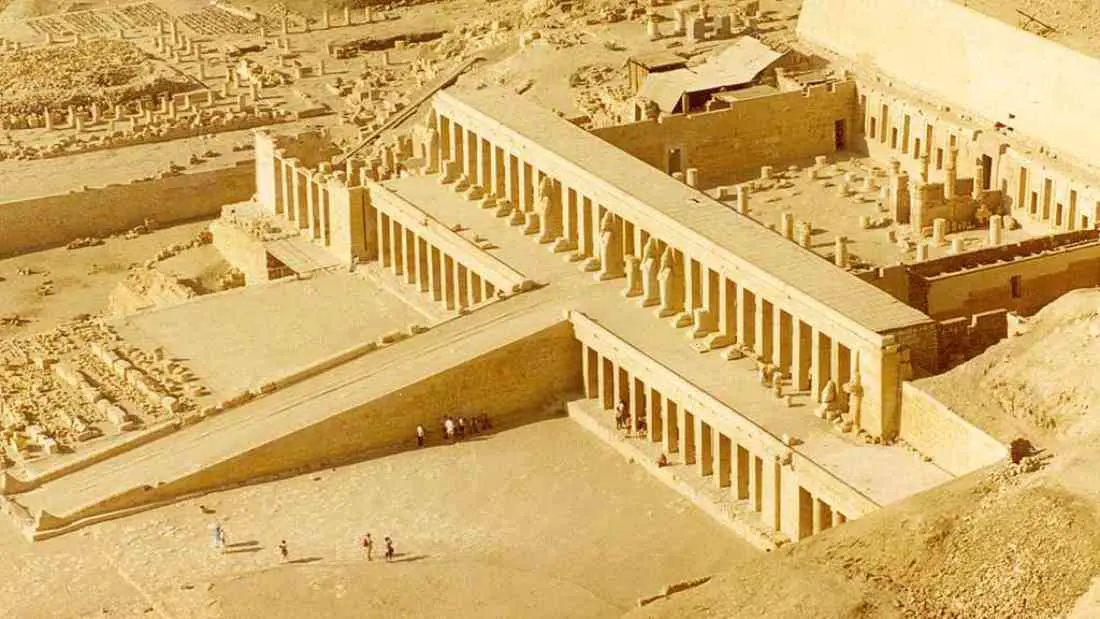
Attempts to Erase Her Legacy
After Hatshepsut’s death, subsequent rulers attempted to erase her legacy from history.
Many of her statues were defaced, and her name was removed from official records and inscriptions.
It wasn’t until the 19th century that archaeologists began to uncover the truth about Hatshepsut and restore her rightful place in history.
Despite these efforts to diminish her contributions, Hatshepsut’s accomplishments as a female pharaoh and her impact on Egyptian society cannot be denied.
The Most Famous Egyptian Pharaohs – Thutmose III (1481 BC – 1425 BC)
Thutmose III, often referred to as Thutmose the Great, was a powerful and influential pharaoh who ruled during the 18th Dynasty of ancient Egypt.
As the sixth pharaoh of his dynasty, Thutmose III left an indelible mark on Egyptian history through his military conquests, administrative reforms, and cultural contributions.
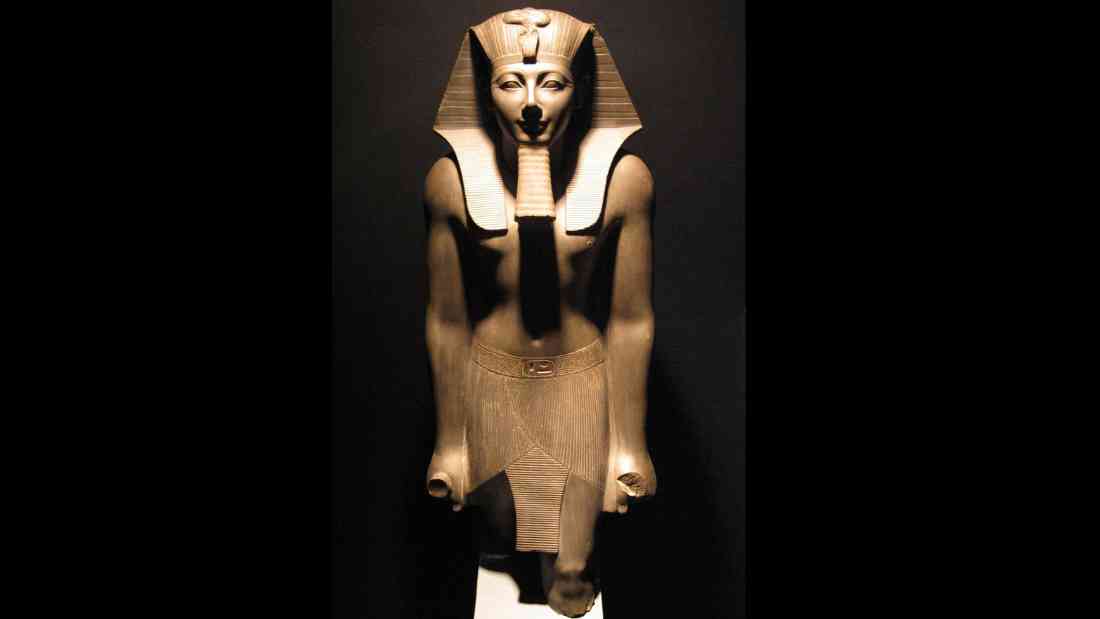
Early Life and Ascension
Thutmose III was born to Thutmose II and a minor wife, but due to his father’s premature death, he ascended the throne at a young age.
However, it was his stepmother, Queen Hatshepsut, who acted as his regent during the initial years of his reign.
Eventually, Thutmose III assumed full control and embarked on a transformative journey that would earn him the moniker “the Great.”
Military Campaigns and Expansion
One of Thutmose III’s most notable achievements was his military prowess and unparalleled success on the battlefield.
He undertook numerous military campaigns, leading Egypt to unprecedented territorial expansion.
Thutmose III’s conquests reached as far as modern-day Syria, Palestine, and parts of Mesopotamia, solidifying Egypt’s dominance in the region.
His military strategies were innovative, employing both conventional warfare and siege tactics to secure victory.
Administrative Reforms and Economic Development
Thutmose III was not only a skilled warrior but also a wise ruler who implemented significant administrative reforms.
He established a centralized bureaucracy that improved governance and allowed for efficient tax collection.
Under his reign, Egypt experienced economic prosperity, with the pharaoh investing in infrastructure projects, expanding trade networks, and promoting agricultural development.
Thutmose III’s reign saw a flourishing of art, architecture, and trade, elevating Egypt’s status both internally and externally.
Cultural Contributions and Legacy
Thutmose III’s reign marked a period of cultural renaissance in Egypt.
He commissioned grand architectural projects, including the expansion of temples and the construction of magnificent monuments, showcasing his devotion to the gods and reaffirming the pharaoh’s divine status.
Thutmose III also promoted the veneration of ancient Egyptian deities, fostering religious practices and rituals. His achievements were immortalized through inscriptions and reliefs on temple walls and monuments, ensuring his legacy would endure.
The Most Famous Egyptian Pharaohs – Amenhotep III (1391 BC – 1353 BC)
Amenhotep III, also known as Amenhotep the Magnificent, was an illustrious pharaoh who reigned during the New Kingdom period of ancient Egypt.
His reign, which lasted from 1391 BC to 1353 BC, is often referred to as the “Golden Age” of Egypt, as it marked a period of unparalleled prosperity, artistic brilliance, and diplomatic success for ancient Egypt.
His skilled rule and strategic alliances ensured peace and economic growth, allowing for a flourishing of cultural and architectural achievements.
Amenhotep III’s legacy as a patron of the arts and his ability to maintain stability and prosperity earned him the title of “the Magnificent” and firmly established his place among Egypt’s most influential pharaohs
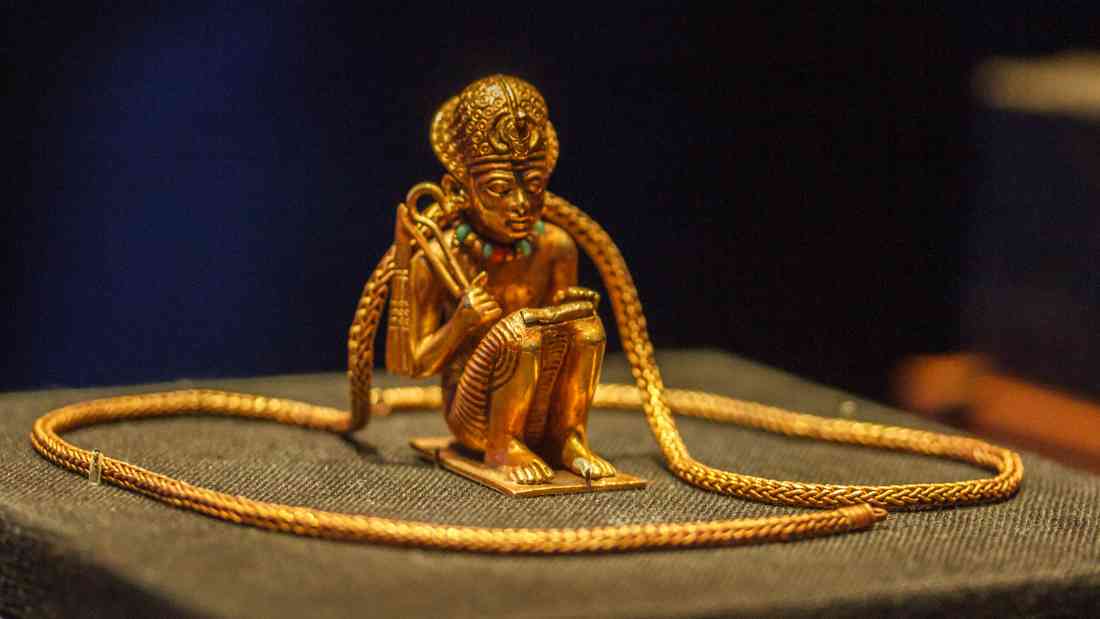
Reign and Consolidation of Power
Amenhotep III ascended to the throne at a young age and inherited a stable kingdom from his father, Thutmose IV.
He quickly established himself as a skilled ruler, focusing on consolidating Egypt’s power and maintaining internal stability.
Through his strategic alliances and diplomatic efforts, Amenhotep III forged strong relationships with neighboring kingdoms, ensuring peace and prosperity for Egypt.
Architectural Marvels and Splendor
Under Amenhotep III’s rule, Egypt experienced a flourishing of artistic and architectural achievements.
The pharaoh commissioned numerous monumental structures, including grand temples, palaces, and statues, showcasing his opulence and devotion to the gods.
One of his most notable architectural projects was starting the construction of the Luxor temple complex, dedicated to Amun-Ra, which became a symbol of his reign and a testament to the artistic mastery of ancient Egypt.
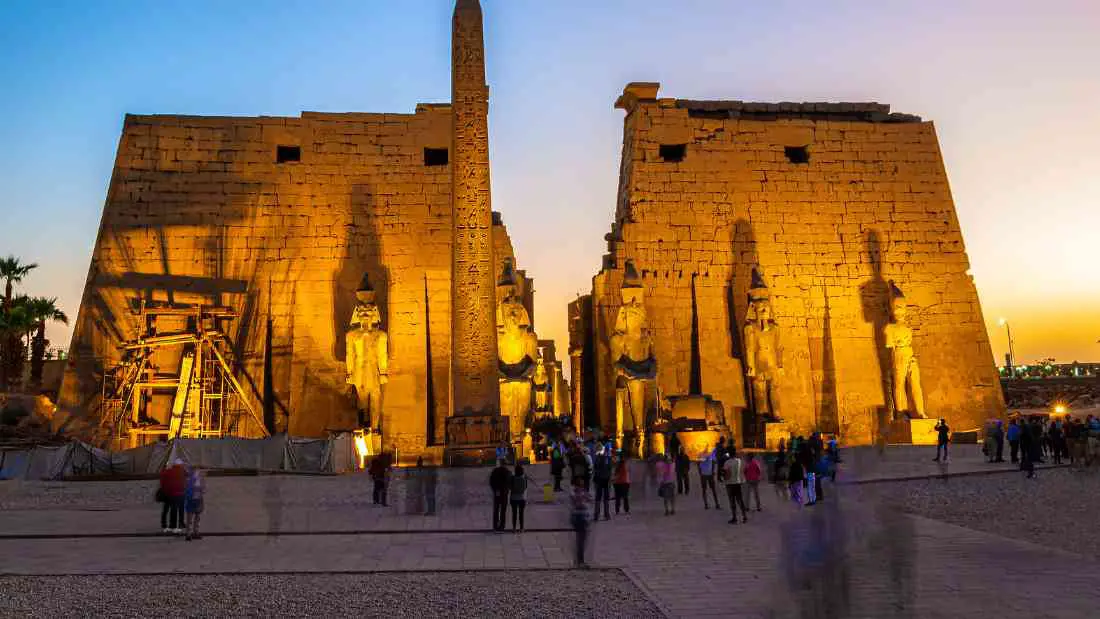
Cultural and Artistic Renaissance
Amenhotep III’s reign witnessed a renaissance of culture and art. The pharaoh was a renowned patron of the arts, supporting talented artists, sculptors, and craftsmen.
The period saw the creation of exquisite sculptures and artworks that showcased the beauty and elegance of ancient Egyptian aesthetics.
Many of these masterpieces have survived to this day, providing us with insights into the artistic achievements of Amenhotep III’s era.
International Diplomacy and Wealth
Amenhotep III’s reign was characterized by a prosperous economy fueled by extensive international trade and diplomatic relationships with other powerful kingdoms.
The pharaoh’s marriage alliances, including his marriage to the Mitannian princess Tadukhepa, solidified his position as an influential ruler in the ancient Near East.
These diplomatic ties brought wealth and exotic goods to Egypt, further enhancing its prestige and influence on the world stage.
Legacy and Succession
Amenhotep III’s reign set the stage for a prosperous and stable Egypt that would be inherited by his son, Akhenaten.
The cultural and artistic achievements of his era continued to influence subsequent pharaohs, leaving a lasting impact on Egyptian history.
The wealth accumulated during Amenhotep III’s reign provided a solid foundation for the country’s future endeavors and cemented his status as one of Egypt’s greatest pharaohs.
The Most Famous Egyptian Pharaohs – Akhenaten (1353 BC – 1336 BC)
Akhenaten, also known as Amenhotep IV, reigned during the 18th dynasty of ancient Egypt, approximately from 1351 BC to 1336 BC.
He is best remembered for his radical religious reforms, which centered around the worship of a single god, Aten, and his establishment of a new capital city called Akhetaten (modern-day Amarna).
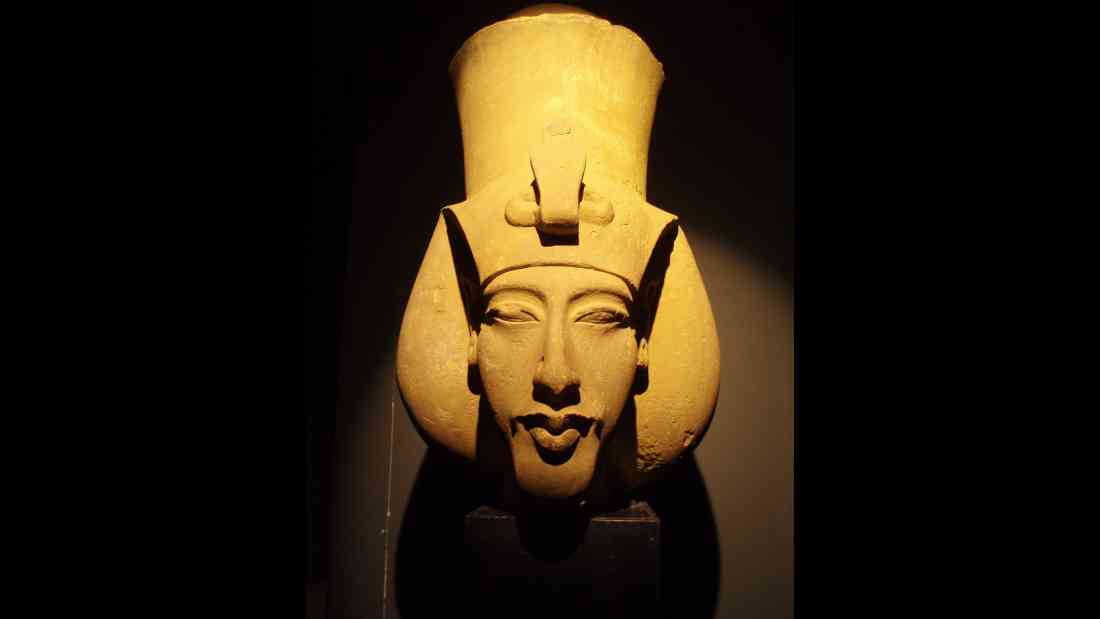
Religious Revolution
Akhenaten’s reign marked a significant departure from traditional Egyptian polytheism.
He initiated a religious revolution by proclaiming Aten, the sun disk, as the supreme deity and the only god worthy of worship.
This monotheistic belief system challenged the long-established pantheon of Egyptian gods and shifted the focus of religious practice.
The City of Akhetaten
To further solidify his religious reforms, Akhenaten founded a new capital city named Akhetaten, meaning “Horizon of Aten.”
Located midway between Memphis and Thebes, Akhetaten served as a center for the worship of Aten and as a symbol of Akhenaten’s break with traditional religious practices.
The city boasted grand temples and palaces, showcasing the pharaoh’s commitment to his new religious ideology.
Artistic Style
Akhenaten’s reign witnessed a distinctive artistic style known as Amarna art.
This style showcased a departure from the conventional proportions and representations of the human form.
Akhenaten and his family were depicted with elongated skulls, slender bodies, and exaggerated facial features, emphasizing the pharaoh’s distinctive physical appearance and his connection to the divine.
Cultural Impact and Social Reforms
Akhenaten’s religious reforms had a profound impact on Egyptian society.
The traditional priesthood, closely associated with the old gods, lost much of its power and influence.
Akhenaten established a more centralized rule, diminishing the authority of local officials and promoting direct worship of Aten.
The pharaoh’s focus on the sun god also had implications for daily life, with the sun taking on a more significant role in religious rituals and ceremonies.
Legacy and Aftermath
Following Akhenaten’s death, his religious reforms were quickly abandoned, and the traditional worship of multiple gods was restored by his successors.
The city of Akhetaten was largely abandoned, and monuments associated with Akhenaten were defaced or destroyed as part of an effort to erase his memory.
Despite this, Akhenaten’s reign left a lasting impact on Egyptian history, as it represented a bold attempt to challenge long-standing religious traditions and reshape the cultural landscape.
The Most Famous Egyptian Pharaohs – Tutankhamun (1341 BC – 1323 BC)
Tutankhamun may have had a short reign, but his legacy continues to captivate the world.
The discovery of his tomb by Howard Carter in 1922 unveiled a treasure trove of artifacts that provided a glimpse into the grandeur and symbolism associated with ancient Egyptian burial practices.
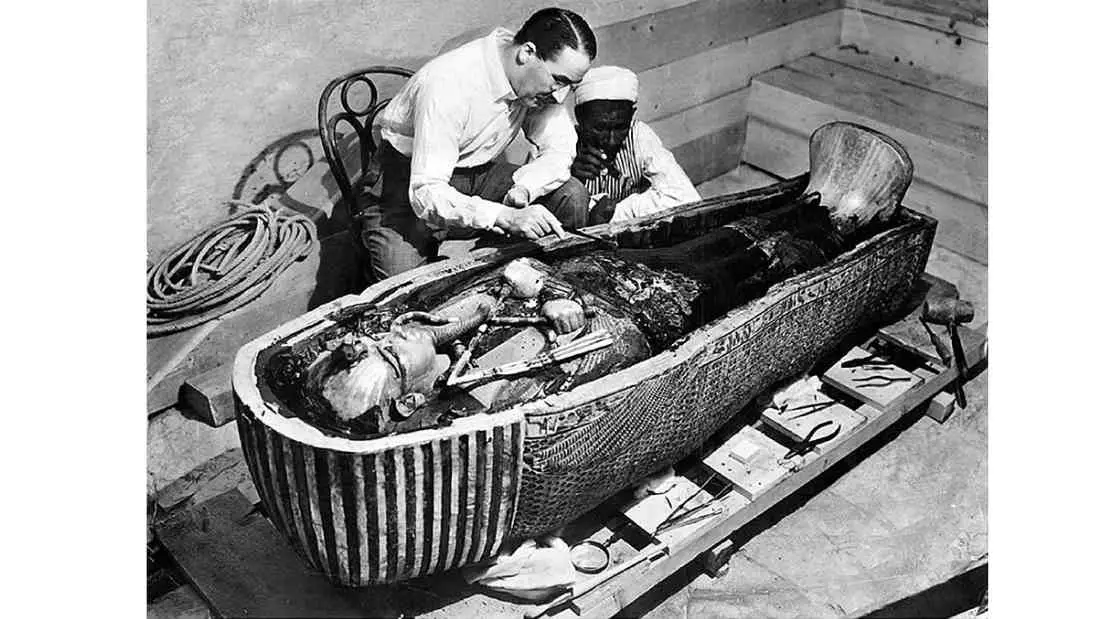
The Discovery of Tutankhamun’s Tomb
The discovery of Tutankhamun’s tomb in the Valley of the Kings was a momentous event in archaeological history.
Howard Carter’s meticulous excavation revealed a wealth of treasures, including ornate funerary masks, golden furniture, elaborate jewelry, and intricate chariots.
These artifacts not only showcased the opulence and artistic mastery of ancient Egypt but also shed light on the rituals and beliefs surrounding pharaonic burials.
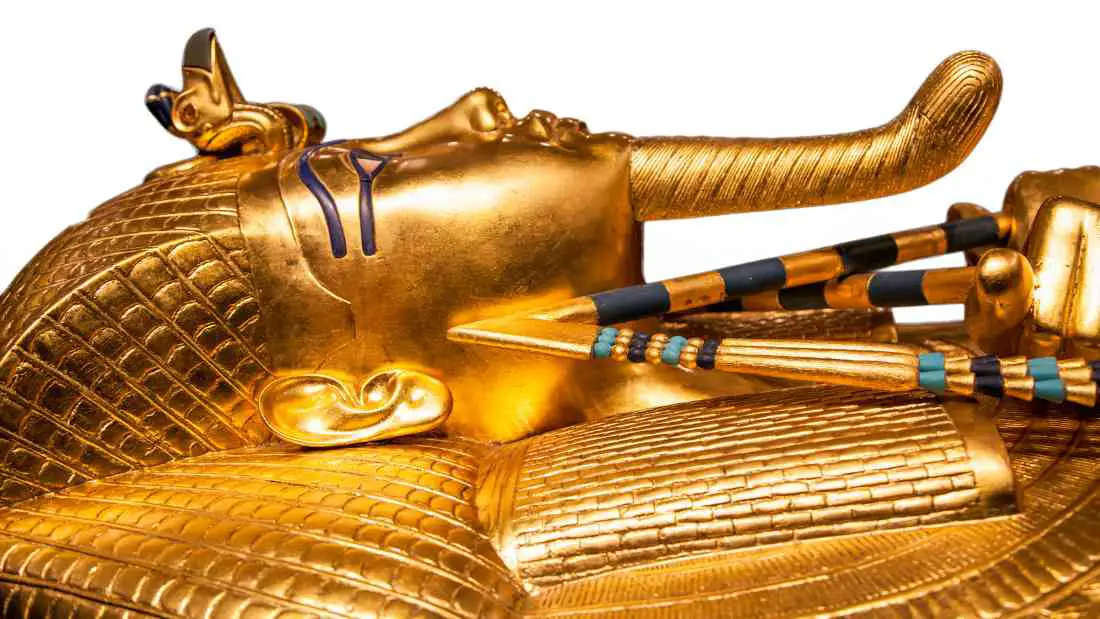
Insights into Ancient Egyptian Burial Practices
Tutankhamun’s tomb provided invaluable insights into ancient Egyptian burial practices and beliefs about the afterlife.
The meticulously preserved treasures and funerary items were intended to accompany the pharaoh on his journey to the afterlife.
Detailed wall paintings and inscriptions within the tomb depicted scenes from Egyptian mythology, showcasing the importance of rituals and the belief in an afterlife filled with prosperity and eternal life.
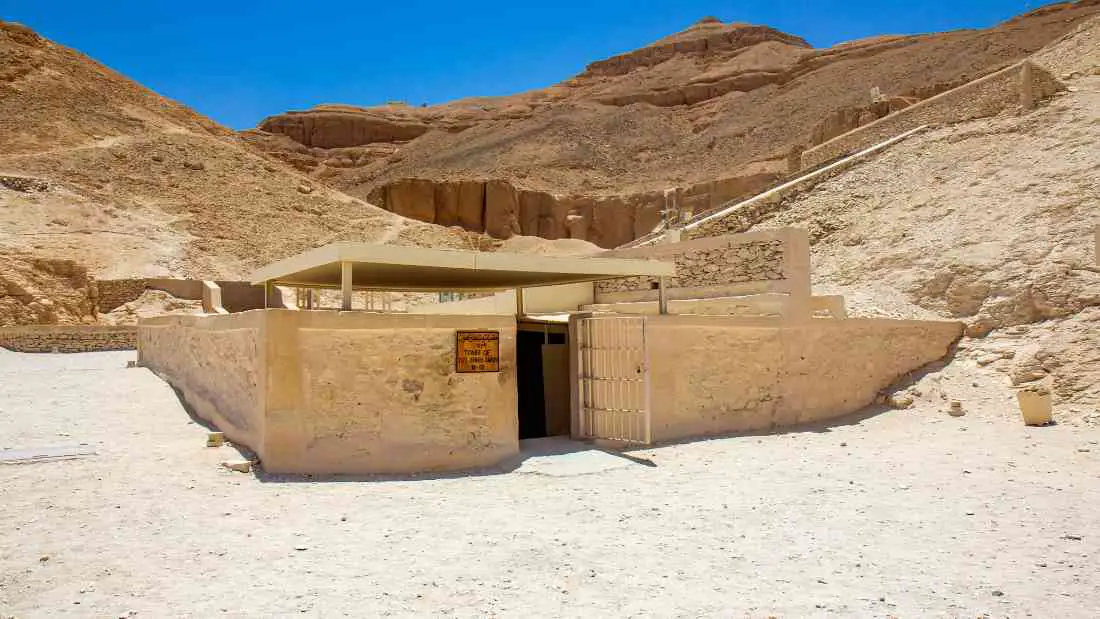
Opulence and Symbolism
The treasures found within Tutankhamun’s tomb highlighted the immense wealth and power associated with pharaohs during the New Kingdom period.
Elaborate golden masks, jewelry encrusted with precious gems, and exquisite statues demonstrated the pharaoh’s divine status and the reverence with which he was regarded.
The symbolism behind these artifacts revealed the Egyptian belief in divine kingship and the pharaoh’s role as a conduit between the gods and the mortal realm.
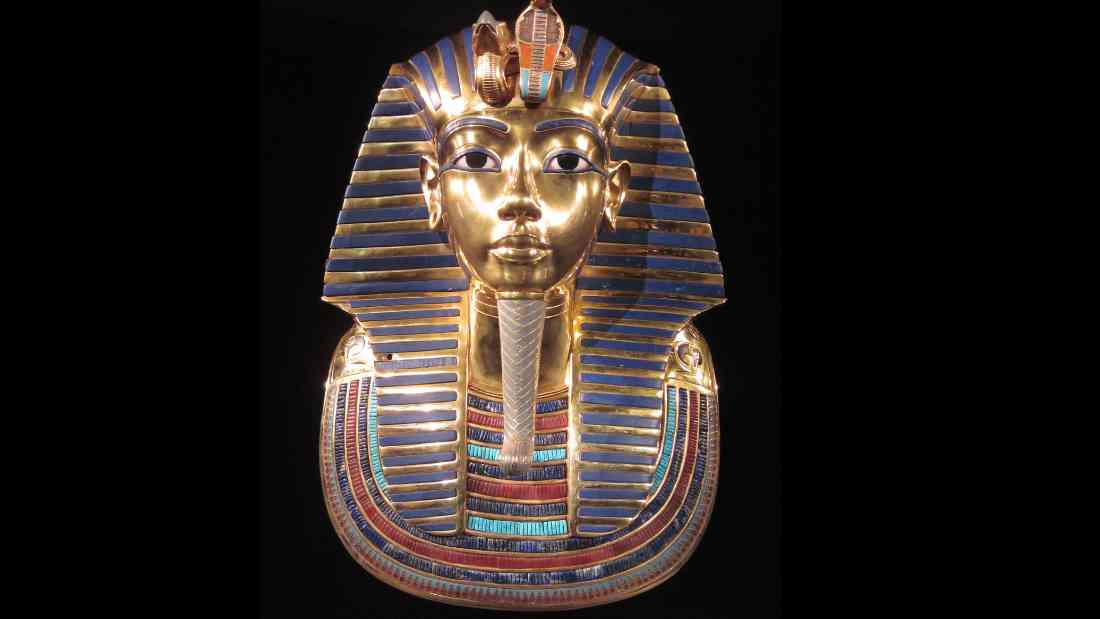
The Enduring Fascination
The discovery of Tutankhamun’s tomb sparked a global fascination with ancient Egypt that continues to this day.
The media coverage and exhibitions showcasing the treasures of the boy king brought ancient Egyptian history into the public consciousness.
The allure of Tutankhamun’s tomb lies not only in its opulence but also in the mystery surrounding his untimely death, theories of foul play, and the “Curse of the Pharaohs,” which captured imaginations and fueled speculation.
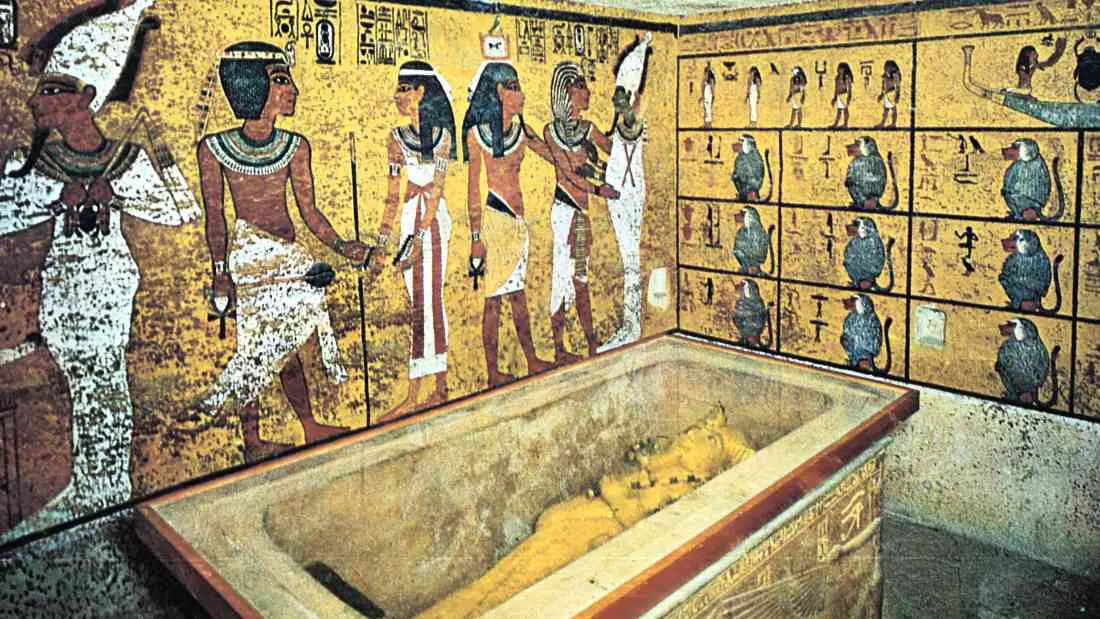
The Most Famous Egyptian Pharaohs – Ramses II (1303 BC – 1213 BC)
Ramses II, also known as Ramses the Great, reigned for 66 years and left an indelible mark on ancient Egypt.
Through monumental structures like Abu Simbel, Luxor, and the Ramesseum, Ramses II immortalized his name in stone, symbolizing his power and devotion to the gods.
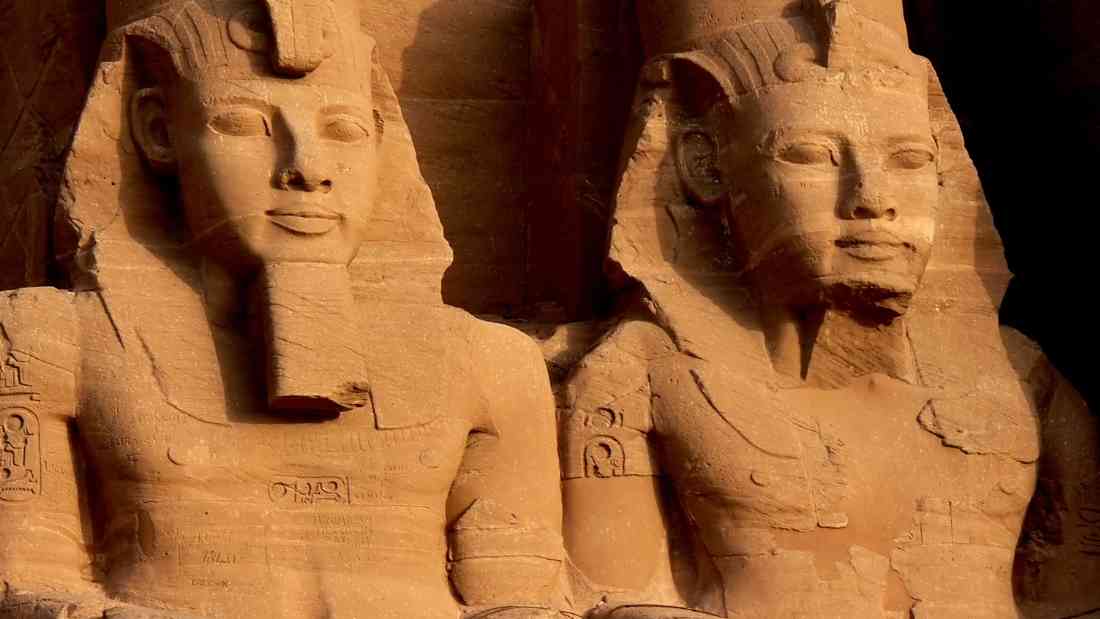
Military Prowess
Ramses II’s military achievements are legendary and speak volumes about his leadership skills.
The Battle of Kadesh against the Hittites stands out as one of the most significant events of his reign.
This epic clash, fought in 1274 BCE, showcased Ramses’ strategic genius and determination.
The battle itself was immortalized through detailed inscriptions and reliefs on temple walls, providing valuable insights into ancient warfare tactics.
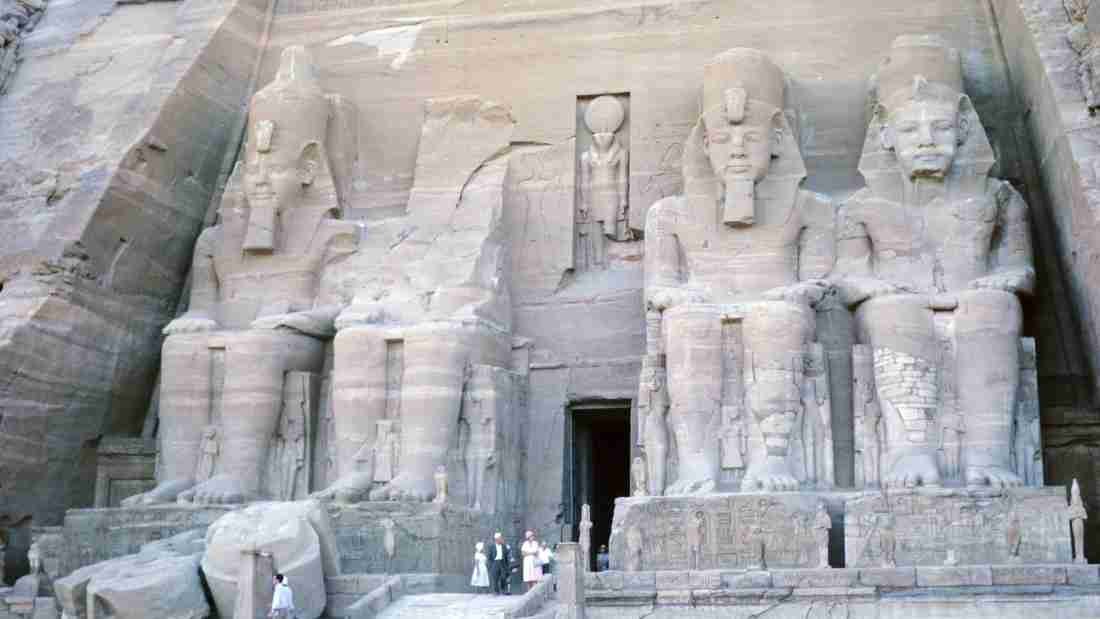
Monumental Structures
Ramses II’s ambition extended beyond the battlefield, as he sought to leave a lasting legacy through awe-inspiring architectural projects.
Among his greatest achievements are the iconic temples of Abu Simbel and Luxor.
Abu Simbel, carved into the cliffs of Nubia, features colossal statues of Ramses himself, projecting an aura of power and grandeur.
The Ramesseum
Another testament to Ramses II’s vision is the Ramesseum, his mortuary temple on the west bank of the Nile in Thebes.
This vast complex served as a place of worship and a memorial to the pharaoh.
The Ramesseum boasted impressive columns, intricate reliefs, and colossal statues, all illustrating the pharaoh’s divine status and honoring his legacy.
Despite the temple’s partial ruin today, it still stands as a testament to Ramses II’s architectural prowess.
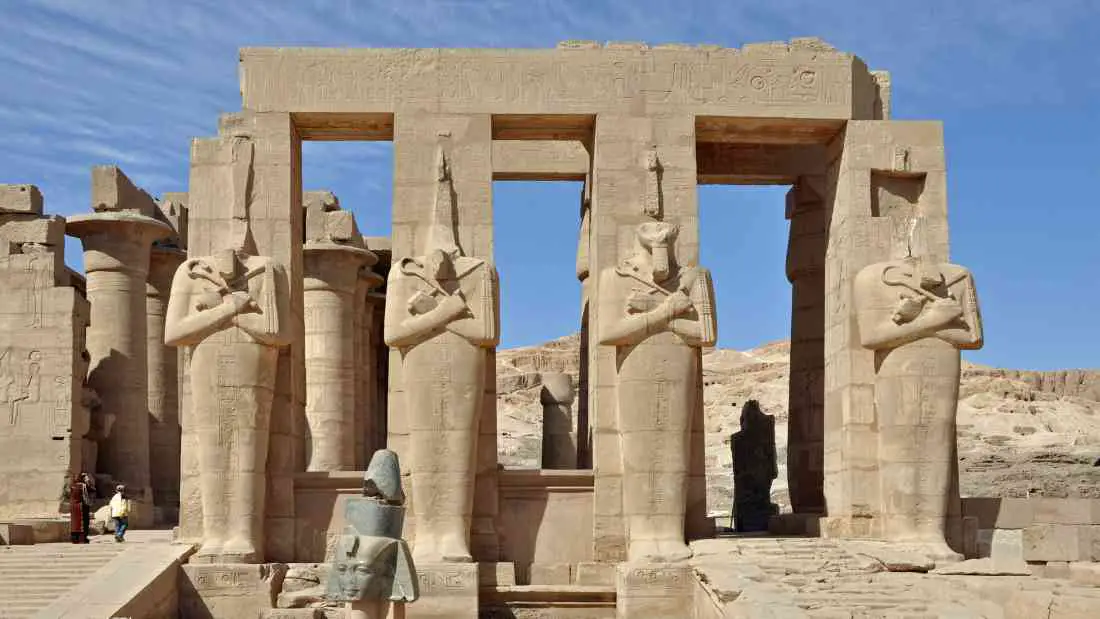
The Empire of Ramses
Ramses II’s reign witnessed not only military conquests but also a flourishing empire.
His diplomatic efforts, such as signing the first recorded peace treaty with the Hittites, brought stability to the region and ensured Egypt’s dominance.
Ramses II expanded Egypt’s borders, securing its position as a major power in the ancient world.
His diplomatic efforts and expansion of Egypt’s empire further solidified his legacy.
Ramses II remains a towering figure in history, forever remembered as one of Egypt’s greatest pharaohs.
The Most Famous Egyptian Pharaohs – Xerxes I (519 – 465 BC)
Xerxes I, also known as Xerxes the Great, was a prominent Persian king who reigned from 519 to 465 BC.
He inherited a vast empire from his father, Darius I, and played a significant role in shaping the history of the Achaemenid Empire.
Xerxes is best remembered for his military campaigns, architectural achievements, and his role in the iconic Battle of Thermopylae.
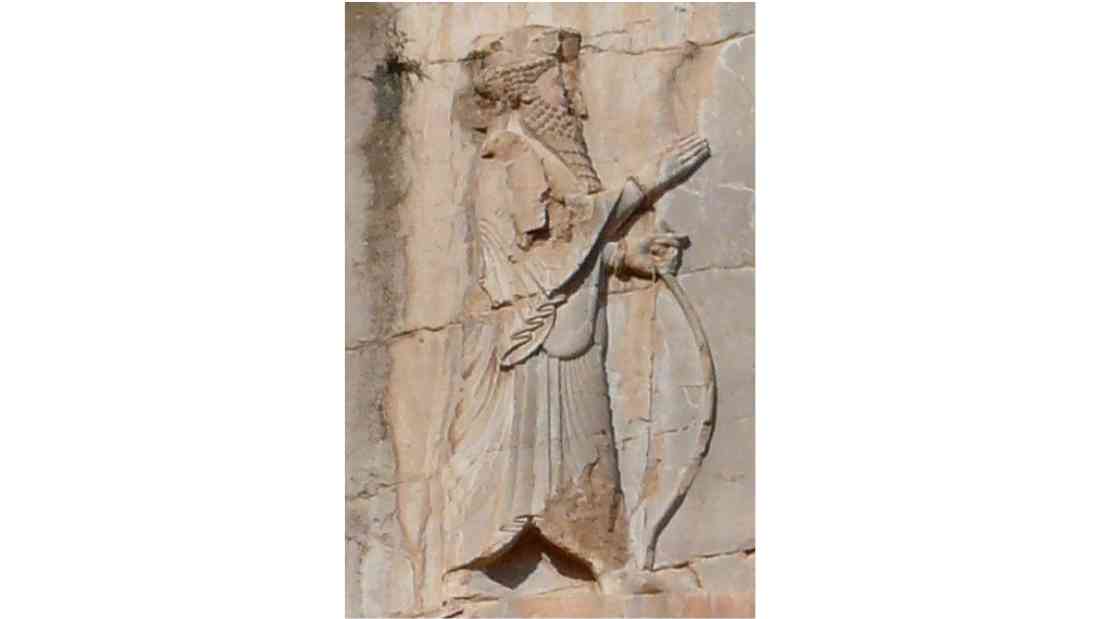
Ascension and Consolidation of Power
Xerxes I became king after the death of his father, Darius I.
He faced early challenges to his rule but quickly established his authority, ensuring the stability and continuity of the Persian Empire.
Xerxes implemented administrative reforms, strengthened the central government, and expanded the influence of the Persian culture throughout his vast dominions.
Military Campaigns
Xerxes I is renowned for his ambitious military campaigns, particularly his invasion of Greece.
In 480 BC, he launched a massive expedition with the goal of subduing the Greek city-states.
This campaign resulted in major battles such as the Battle of Thermopylae, where a small Greek force, led by the Spartan King Leonidas, held off the Persian army for several days before ultimately succumbing to their overwhelming numbers.
Although Xerxes’ invasion ultimately failed, it demonstrated the military might of the Persian Empire and left a lasting impact on Greek and Persian history.
Architectural Achievements
Xerxes I was a patron of the arts and invested heavily in architectural projects across his empire.
He initiated the construction of numerous grand palaces and buildings, including the magnificent Gate of All Nations at Persepolis, which served as the ceremonial entrance to the royal complex.
Xerxes’ architectural endeavors showcased his wealth, power, and desire to leave a lasting legacy.
Religious Tolerance and Cultural Exchange
Xerxes I was known for his policy of religious tolerance, allowing different cultures and religions to coexist within the Persian Empire.
This approach fostered cultural exchange and trade, contributing to the empire’s prosperity and stability.
Xerxes’ reign also saw the continued development of the Zoroastrian faith, which became one of the dominant religions in Persia.
Legacy and Succession
Xerxes I’s reign marked a significant period in Persian history, characterized by territorial expansion, cultural achievements, and diplomatic influence.
While his military campaigns in Greece did not achieve the desired outcome, they left an indelible mark on the collective memory of both Greek and Persian civilizations.
After his death, Xerxes was succeeded by his son Artaxerxes I, who continued his father’s policies and upheld the strength and stability of the Persian Empire.
The Most Famous Egyptian Pharaohs – Cleopatra (69 BC–30 BC)
Cleopatra, the iconic queen of Egypt, is a figure shrouded in mystery and allure.
Renowned for her beauty, intelligence, and political acumen, she stands as one of history’s most fascinating personalities.
As the last pharaoh of Egypt, Cleopatra’s alliances with powerful Roman leaders shaped the fate of her kingdom during a tumultuous era.
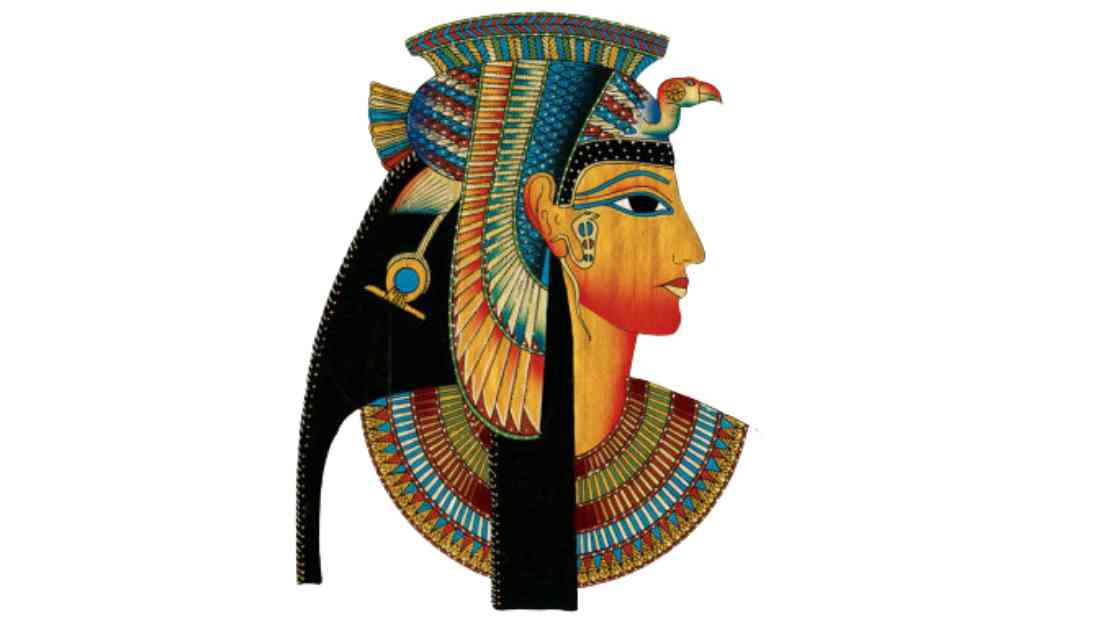
The Rise of Cleopatra
Cleopatra’s ascension to power was marked by political intrigue and familial struggles.
Born into the Ptolemaic dynasty, Cleopatra seized the throne at the age of 18, ruling alongside her younger brother.
Her charisma and intelligence quickly garnered attention, establishing her as a force to be reckoned with in a male-dominated world.
Cleopatra’s ability to navigate the complicated world of Egyptian politics showcased her natural leadership skills and determination.
Alliances with Roman Leaders
Cleopatra’s relationships with powerful Roman leaders, such as Julius Caesar and Mark Antony, played a pivotal role in her reign and the fate of Egypt.
Her alliance with Julius Caesar not only solidified her position on the throne but also ensured Egypt’s independence from Rome.
After Caesar’s assassination, Cleopatra found herself entwined with Mark Antony, forming a formidable union that furthered her political ambitions.
Their relationship sparked a dramatic series of events, ultimately leading to their downfall.
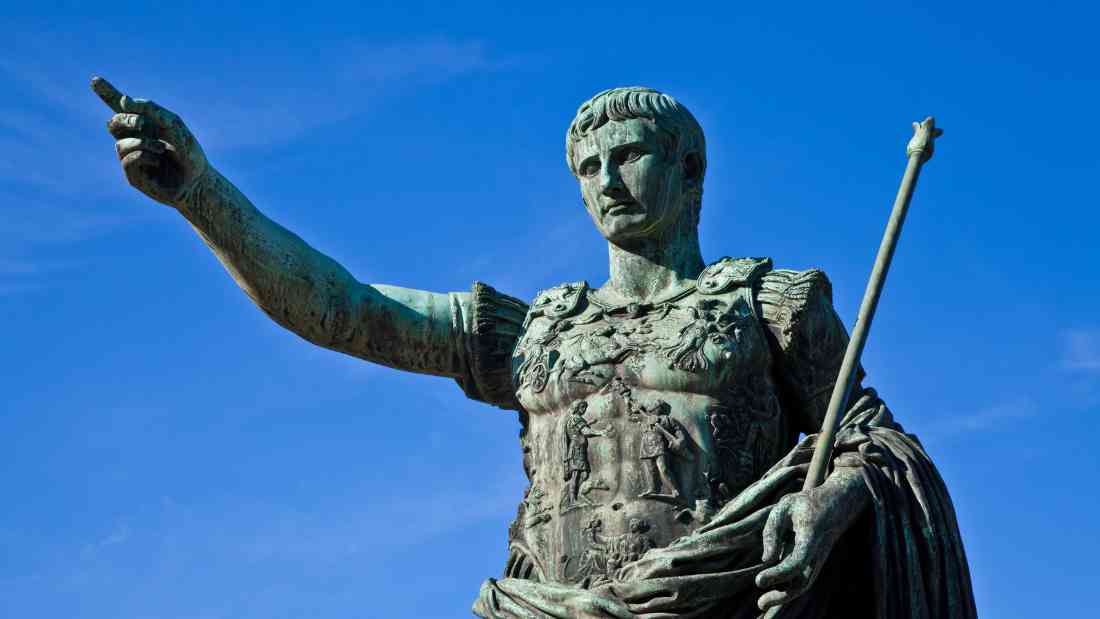
Cleopatra’s Influence and Legacy
Beyond her political maneuverings, Cleopatra’s intelligence and wit were renowned throughout the ancient world.
She was known as a patron of the arts and sciences, fostering cultural exchange and promoting the richness of Egyptian civilization.
Cleopatra’s intellect and linguistic abilities allowed her to converse fluently in multiple languages, making her a formidable diplomat and stateswoman.
Her reign left a lasting impact on Egypt, marking a period of artistic and cultural resurgence.
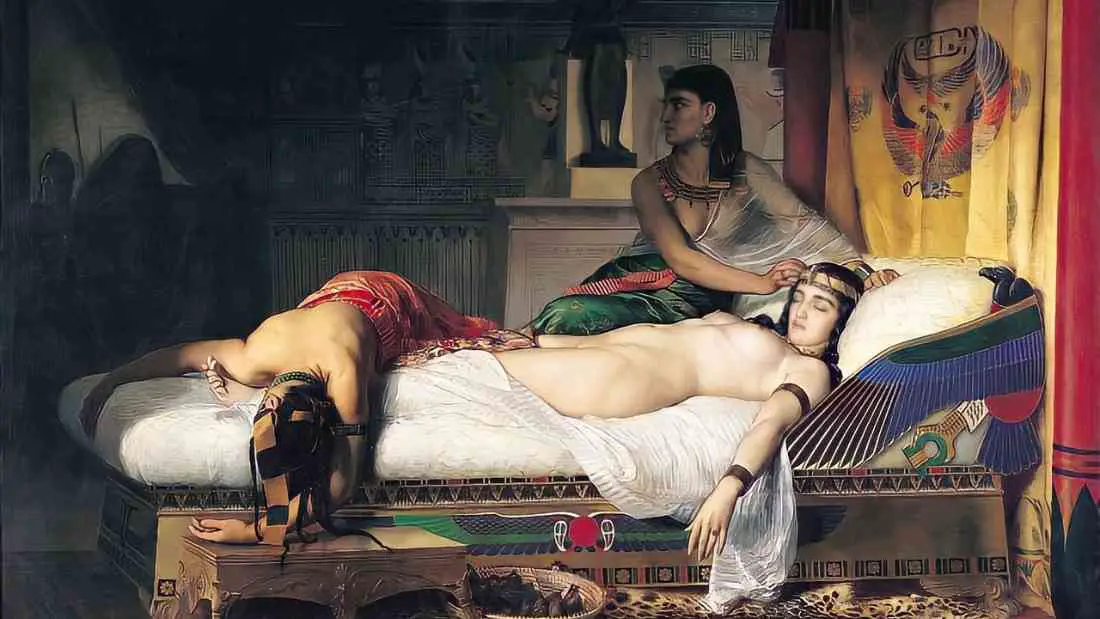
The Legend of Cleopatra
Cleopatra’s life and tragic death have become the stuff of legends.
The story of her seduction of both Julius Caesar and Mark Antony has captivated imaginations for centuries.
The romanticized tales of her beauty, charm, and cunning continue to be depicted in literature, art, and film, further perpetuating her mythical status.
Cleopatra’s death by suicide, allegedly through the bite of an asp, has become an enduring symbol of tragic love and defiance.
Final Thoughts on the Legacy of the Most Famous Egyptian Pharaohs
The legacy of the most famous Egyptian pharaohs continues to captivate the imagination and intrigue historians and enthusiasts alike. From Djoser to Cleopatra, these pharaohs left an indelible mark on ancient Egypt and shaped its history in various ways.
The reign of King Tutankhamun, despite being short-lived, introduced the world to the splendors of ancient Egyptian art and treasures through the discovery of his tomb. His name has become synonymous with the mysteries and wonders of the ancient past.
Pharaohs like Djoser and Khufu were renowned for their architectural achievements, with Djoser’s Step Pyramid and Khufu’s Great Pyramid of Giza standing as timeless testaments to their grand visions and engineering prowess.
Hatshepsut, one of the few female pharaohs, left a lasting legacy through her successful reign and impressive building projects. She shattered gender conventions and proved that women could wield power and lead Egypt with strength and wisdom.
Thutmose III’s military conquests earned him the title “Napoleon of Egypt” and extended the borders of Egypt to their greatest extent. His reign saw significant expansion and consolidation of Egyptian territory, making him one of the most influential pharaohs in terms of political and military achievements.
These pharaohs, along with others like Akhenaten, also left their mark through religious and cultural reforms, reshaping the religious landscape and influencing artistic styles. They brought about advancements in technology, trade, and governance, establishing Egypt as a dominant power in the ancient world.
The legacy of these famous pharaohs is a testament to the enduring power and influence of Egypt’s ancient civilization. Their monumental achievements, cultural contributions, and enduring mystique continue to fascinate and inspire people around the globe, ensuring that their stories and legacies will be remembered for centuries to come.

Frequently Asked Questions About The Most Famous Egyptian Pharaohs
The most famous pharaoh of ancient Egypt is arguably Tutankhamun, also known as King Tut in popular culture. His tomb, filled with magnificent treasures, was discovered in 1922 by Howard Carter, capturing the world’s attention.
The Great Pyramid of Giza was built by Pharaoh Khufu, also known as Cheops. It is the largest of the three pyramids at Giza and is considered one of the Seven Wonders of the Ancient World.
Hatshepsut is widely recognized as the first female pharaoh of ancient Egypt. She ruled during the 18th Dynasty and is known for her successful reign, monumental building projects, and the promotion of trade and exploration.
The exact number of pharaohs in ancient Egypt is uncertain, but it is estimated that there were approximately 170 pharaohs who ruled over a span of 3,000 years.
Pharaoh Pepi II holds the record for the longest reign in Egyptian history, ruling for approximately 94 years during the Sixth Dynasty of the Old Kingdom.
Akhenaten’s reign marked a significant religious revolution in ancient Egypt. He introduced a monotheistic belief system centered around the worship of Aten, the sun disk. This challenged the traditional polytheistic beliefs and had a lasting impact on Egyptian religion.
Pharaoh Djoser, also known as Netjerikhet, is associated with the Step Pyramid of Saqqara. It was designed by his architect Imhotep and is considered one of the earliest colossal stone buildings in Egypt.
Posts About the Egyptian Pantheon of Gods
The Pantheon of Ancient Egyptian Gods – A Comprehensive Guide
The Wrath of Montu – The Mythology of the Egyptian War God
Egyptian God Ammit – The Eater of Hearts in Ancient Egyptian Mythology
The Nightly Journey of Khonsu – The Ancient Egyptian God of the Moon
Ihy – The Joyful Ancient Egyptian God of Music
Min – The Ancient Egyptian God of Fertility
The Egyptian God Anubis – His Evolution from Son of Ra to Protector of the Dead
Unraveling the Mysteries of Babi – The Ancient Egyptian Baboon God
Ra, the Egyptian Sun God – Symbolism and Significance in Ancient Egyptian Culture
Sobek: The Ferocious Crocodile God of Ancient Egypt
The Enigmatic Mythology of Horus, the Egyptian Sky God
The Egyptian God Set – Protector of the Desert and Lord of Conflict
The Ancient Egyptian God Medjed: The Guardian of Osiris and the Afterlife
Anput, the Wife and Female Version of Anubis
Selket – The Scorpion Crowned Egyptian Goddess
Shu – The Egyptian God of Air, Wind, Peace and Lions
Hapi the Androgynous Ancient Egyptian God of the Nile
The Egyptian Sky Goddess Nut: Myth and Symbolism
The 42 Laws of Maat: The Moral Principles of the Ancient Egyptians
The Ancient Egyptian Goddess Mut: The Maternal Power in Egyptian Mythology
The Warrior Goddess: Neith in Ancient Egyptian Mythology
The God Bes: The Joyful Dwarf Deity in Ancient Egyptian Culture
The Egyptian Gods of Love: Hathor and Isis in Ancient Egyptian Mythology
Confronting the Serpent: The God Apep, the Nemesis of Ra in Egyptian Myth

